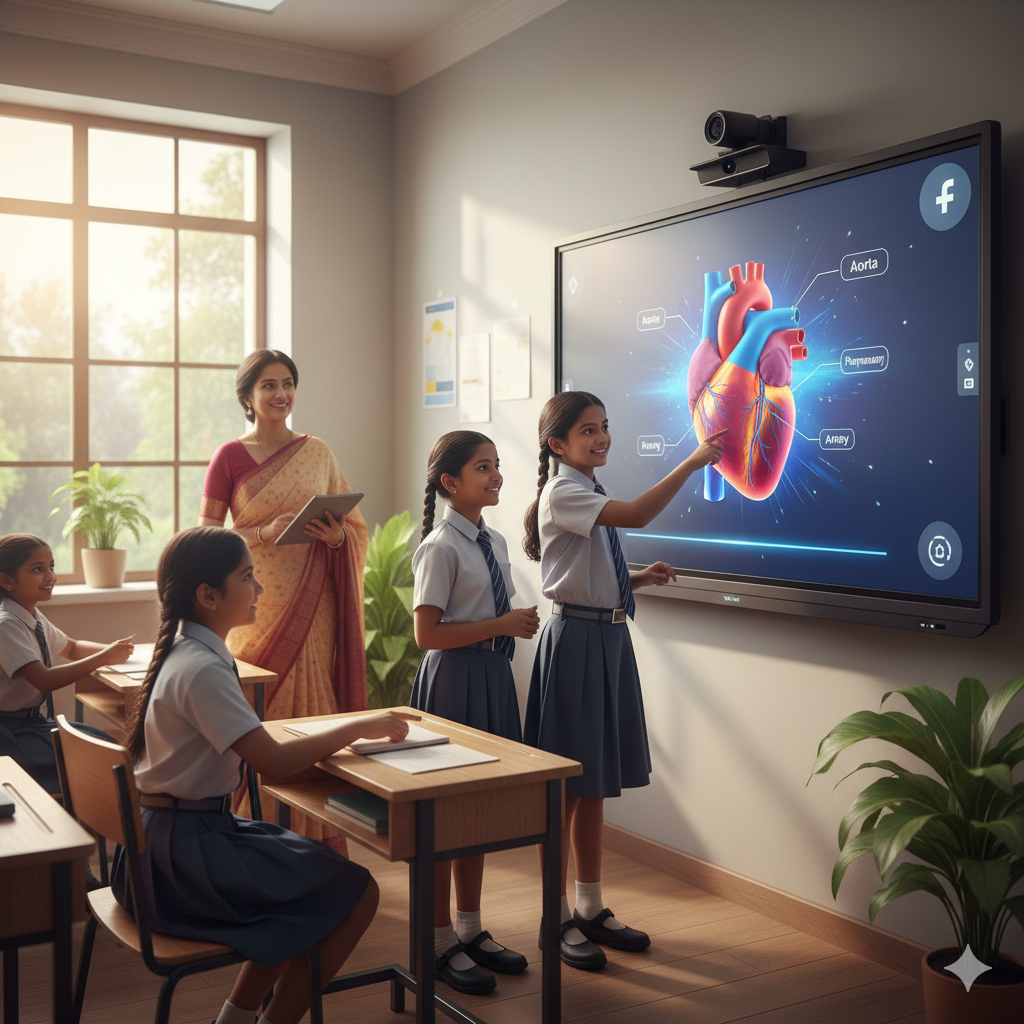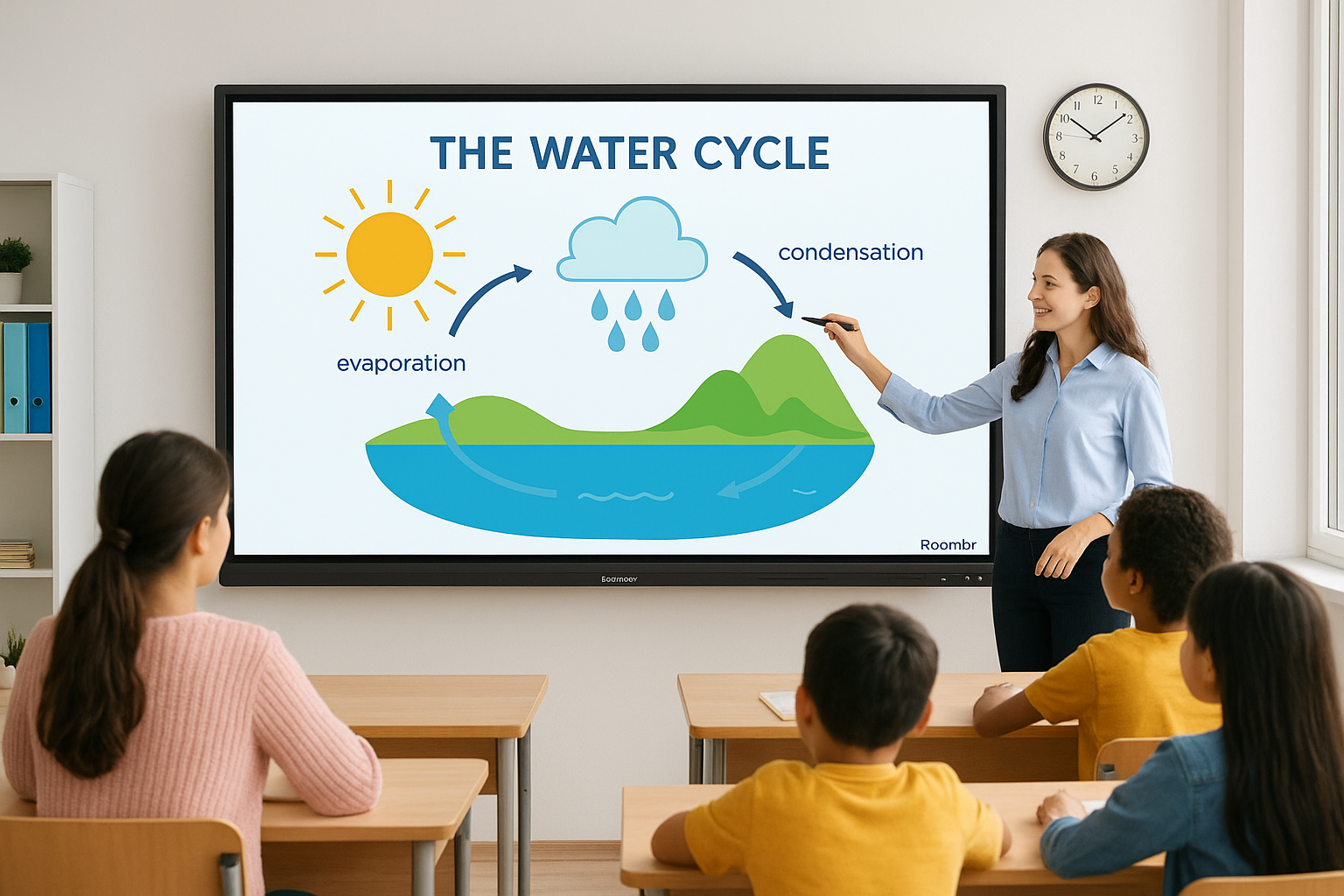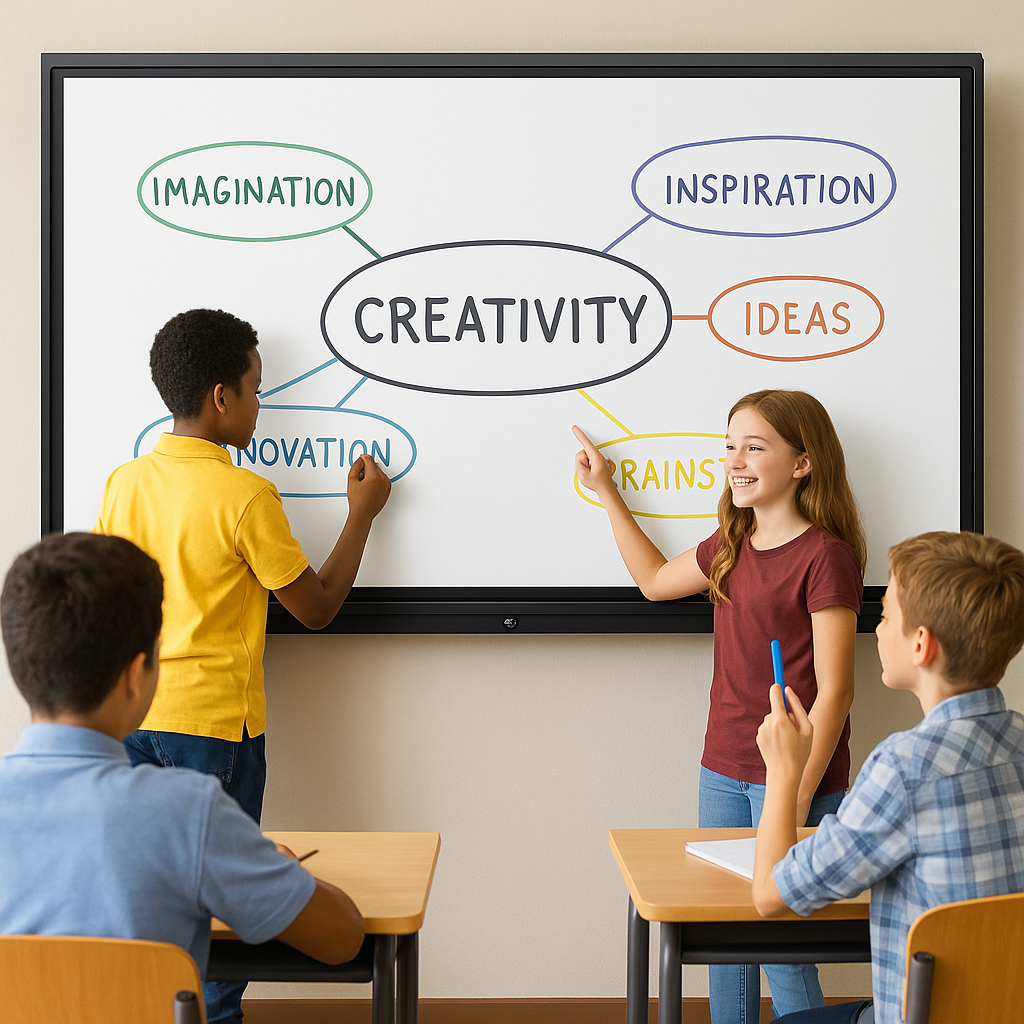Student Wellness Guide for Interactive Flat Panel Displays

With the National Education Policy (NEP) 2020 now in its fifth year of implementation, the digital transformation of Indian education is moving at an efficient pace. From bustling metros to emerging towns, the interactive flat panel display has become the new cornerstone of the digital classroom.
But with all this progress comes a very real, growing concern, one that healthcare specialists are increasingly highlighting: our children are experiencing more Digital Eye Strain (DES) than ever before. This isn't just a minor discomfort. We're talking about persistent headaches, blurry vision, and that deep-down fatigue that makes it hard to focus – all things that directly sabotage a child's ability to learn.
So, the question is how we make technology work smarter for us. The best interactive flat panel display isn't just about dynamic lessons; it's now purposefully built as a wellness tool. Let's dig into the three clever, science-backed technologies making all the difference for our students' health right now.
The Glare Problem: When Half the Class Can't See the Screen

You know the situation. It’s 2 PM, the sun is hitting the classroom just right, and suddenly, a huge swath of your interactive display is just a bright white reflection. The students on that side of the room start squinting, leaning, and eventually, they just tune out. You’ve lost them, not because the content was boring, but because they literally couldn’t see it.
How Smart Anti-Glare Actually Works
This is where great technology feels like magic. We're not talking about a simple matte sticker placed over the glass. True anti-glare technology involves micro-etching the glass surface itself. Think of the difference between a glossy photograph and a professional matte-finish print. The matte print diffuses light from every angle, so you can see the image clearly no matter where you're standing. That's exactly what this smart glass does for your lesson content, making every seat the best seat in the house.
Blue Light: The Invisible Reason for Tired Students
We hear a lot about blue light, but what does it actually mean for a classroom? It’s the high-energy light that screens emit, and it’s notorious for messing with our internal clocks. When students are exposed to it all day, their brains produce less melatonin at night. The result? They struggle to get restful sleep and come to school the next day feeling groggy and unable to focus.
The Big Difference: Hardware vs. Software Blue Light Filters
This is one of the most important things to understand when looking at interactive boards for classrooms.
- The Software Fix: This is the "Night Mode" on your phone. It just puts a yellow-ish filter over the screen. Sure, it cuts some blue light, but it also completely throws off the colors. A vibrant diagram of the human heart suddenly looks dull and inaccurate.
- The Hardware Solution: This is the real technology built right into the interactive flat panel display's light source. It filters out only the most harmful blue light wavelengths before they even hit the screen. This means you get the protective benefits without sacrificing a bit of color accuracy. The lesson remains as vibrant and true-to-life as you intended.
Screen Flicker: The Hidden Headache-Maker
This is the most surprising culprit behind digital eye strain, because you can't even see it. Most screens control their brightness by flashing the backlight on and off hundreds of times per second. It's too fast for your eyes to consciously notice, but your brain picks up on it.
Why an Invisible Flicker Causes Real Fatigue
Imagine being in a room with a strobe light that’s flashing so fast you can’t see it, but you can feel it. That’s what your brain is dealing with. It forces your eye muscles to make thousands of tiny, constant adjustments, leading to that unexplained fatigue, dizziness, or headache at the end of the school day. A flicker-free screen provides a solid, stable beam of light. The difference in comfort is night and day.
Here's a quick tip: You can sometimes spot flicker by looking at a screen through your smartphone camera. If you see dark bands scrolling down the image, you're seeing a flicker. A truly flicker-free interactive flat panel display will look stable and clear.
Your 4-Point Wellness Audit for Any Interactive Flat Panel Display
When you're ready to invest, don't just look at the price tag. Ask these four critical wellness questions:
- Is the Anti-Glare built in? Demand smart, etched glass, not a simple surface coating.
- How does it handle blue light? Verify that it’s a hardware-level solution that preserves color accuracy.
- Is it truly flicker-free? Ask for this to be explicitly stated in the technical specifications.
- Does it have an ambient light sensor? A smart panel should adjust its own brightness to match the room's lighting, so it's never too dim or too harsh.
Conclusion
At the end of the day, what really matters is creating a learning environment where students can thrive. In our modern digital classroom, that means paying attention to the technology they look at for hours every day. Choosing an interactive flat panel display with dedicated wellness features like anti-glare, hardware-based low blue light, and flicker-free technology isn't just an upgrade—it's a commitment. It’s a statement that you prioritize not just your students' education, but their long-term health and student wellness too.
Frequently Asked Questions
1. Are all "eye-care" interactive flat panel displays the same?
No, definitely not. Many brands use the term loosely. A truly eye-safe display will have hardware-level blue light filtering that doesn't wash out colors and a genuinely flicker-free backlight, not just software tricks.
2. Will a low blue light interactive panel make the screen look yellow?
Only if it's a cheap, software-based filter. A high-quality interactive flat panel display with a hardware solution filters out only the bad blue light, so colors stay crisp, natural, and accurate.
3. Isn't just turning down the brightness enough to stop eye strain?
It helps a little, but it doesn't solve the main problems. Lowering the brightness won't stop invisible screen flicker, nor will it do anything about the glare from a classroom window. A complete student wellness approach needs all three technologies working together.
4. How does choosing a health-focused interactive display fit with the NEP 2020?
The National Education Policy (NEP) 2020 is all about using technology to improve learning. By choosing an interactive display that protects student health, you're adopting that technology responsibly. It ensures your digital classroom is a sustainable and supportive environment for the long run.
Build a Healthier Digital Classroom with Roombr
Navigating the world of education technology can be complex, but ensuring your students’ well-being shouldn’t be. At Roombr, we build our technology with a simple philosophy: technology should serve the student, not the other way around. That’s why we’ve built a projection-based digital classroom solution that transforms any wall into an interactive learning space. Designed as a smarter alternative to flat panels, Roombr offers lower reflection and reduced eye strain, helping students stay focused and comfortable throughout the day.
We’re here to be your partner in building a classroom that’s not just smarter, but safer and healthier for everyone. Together, let’s create learning spaces that are not just more engaging, but also healthier and more human-centered.
Foziya Abuwala
Share
Step Into the future of
Education with Roombr

















